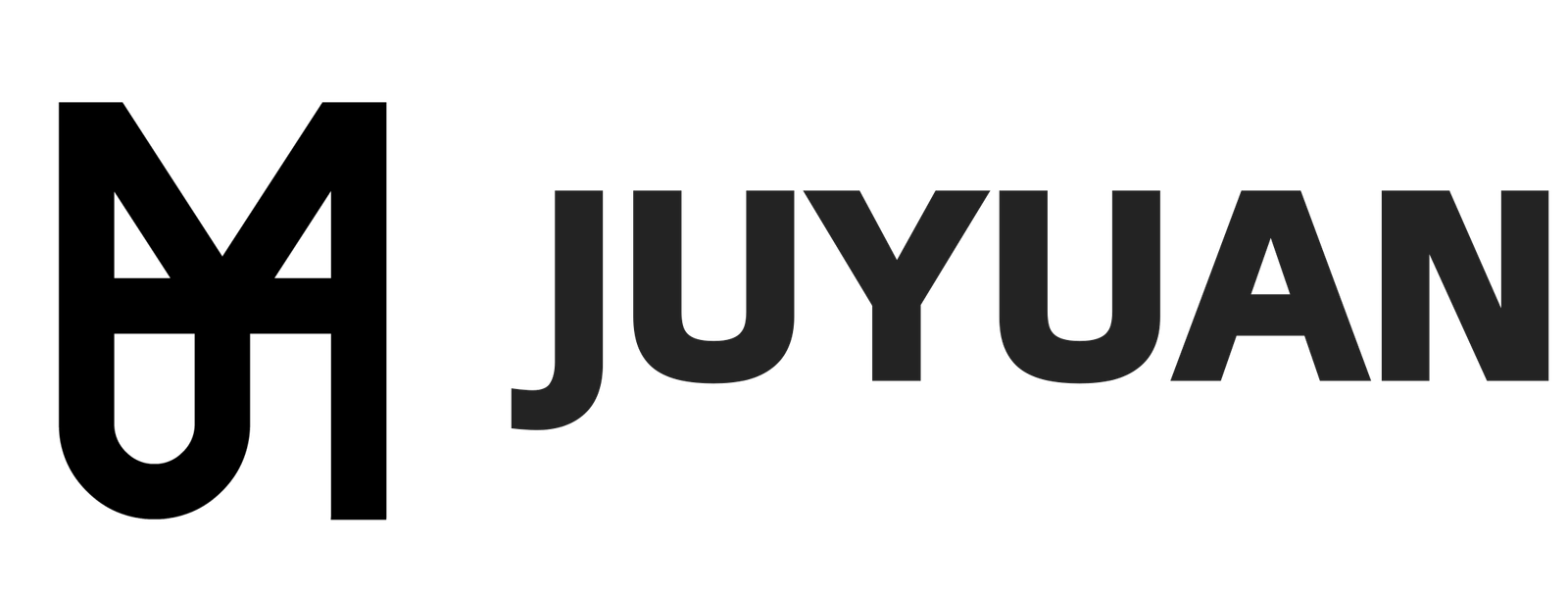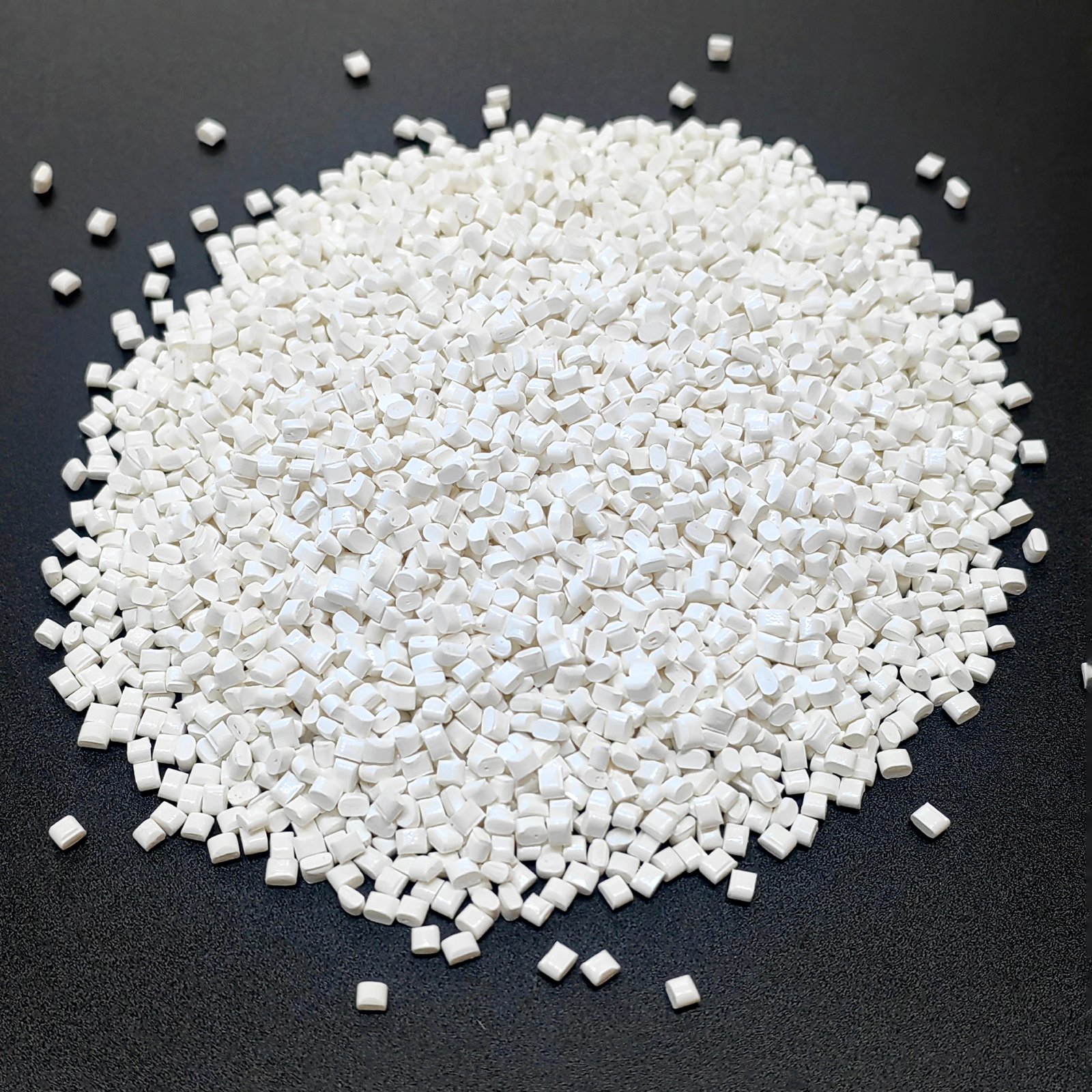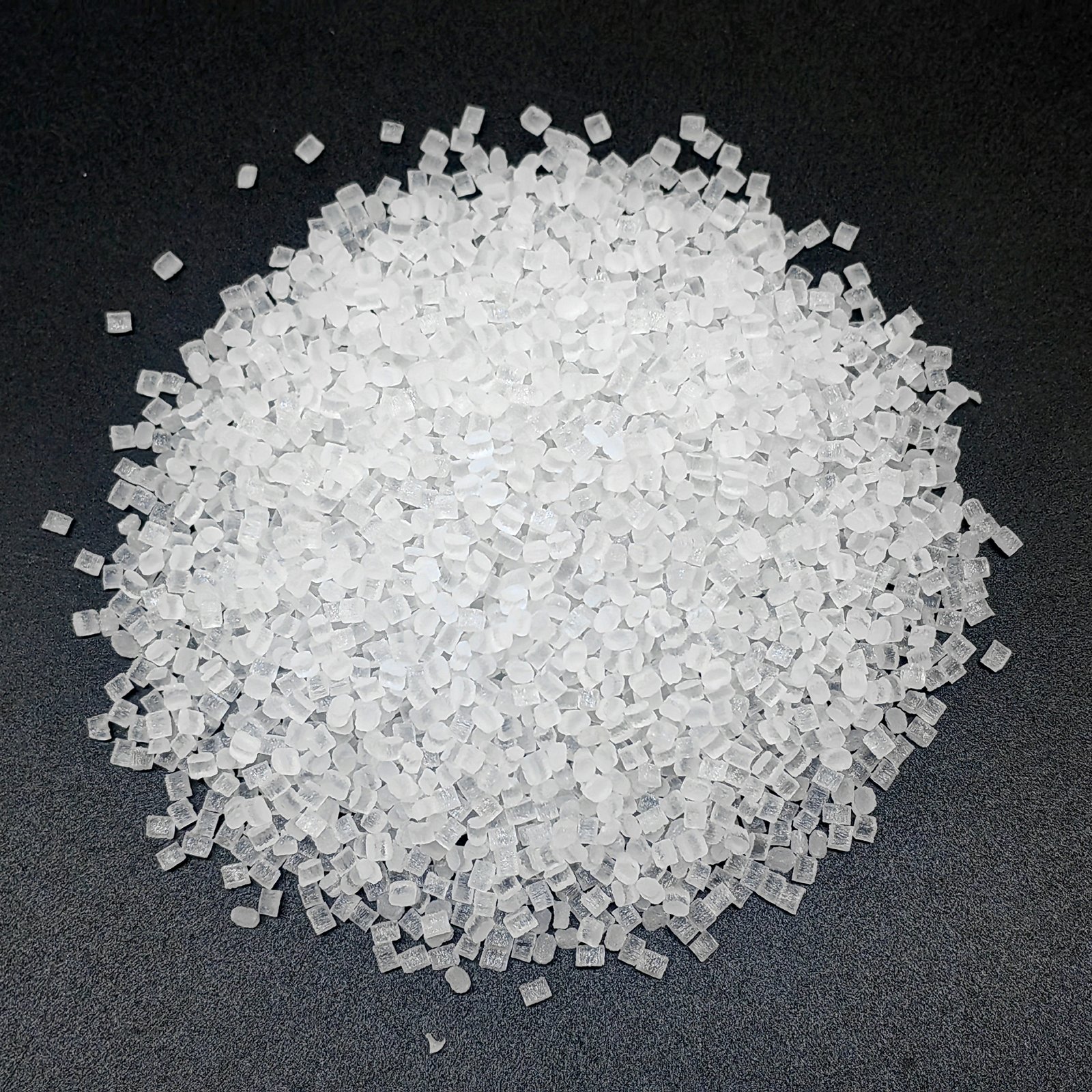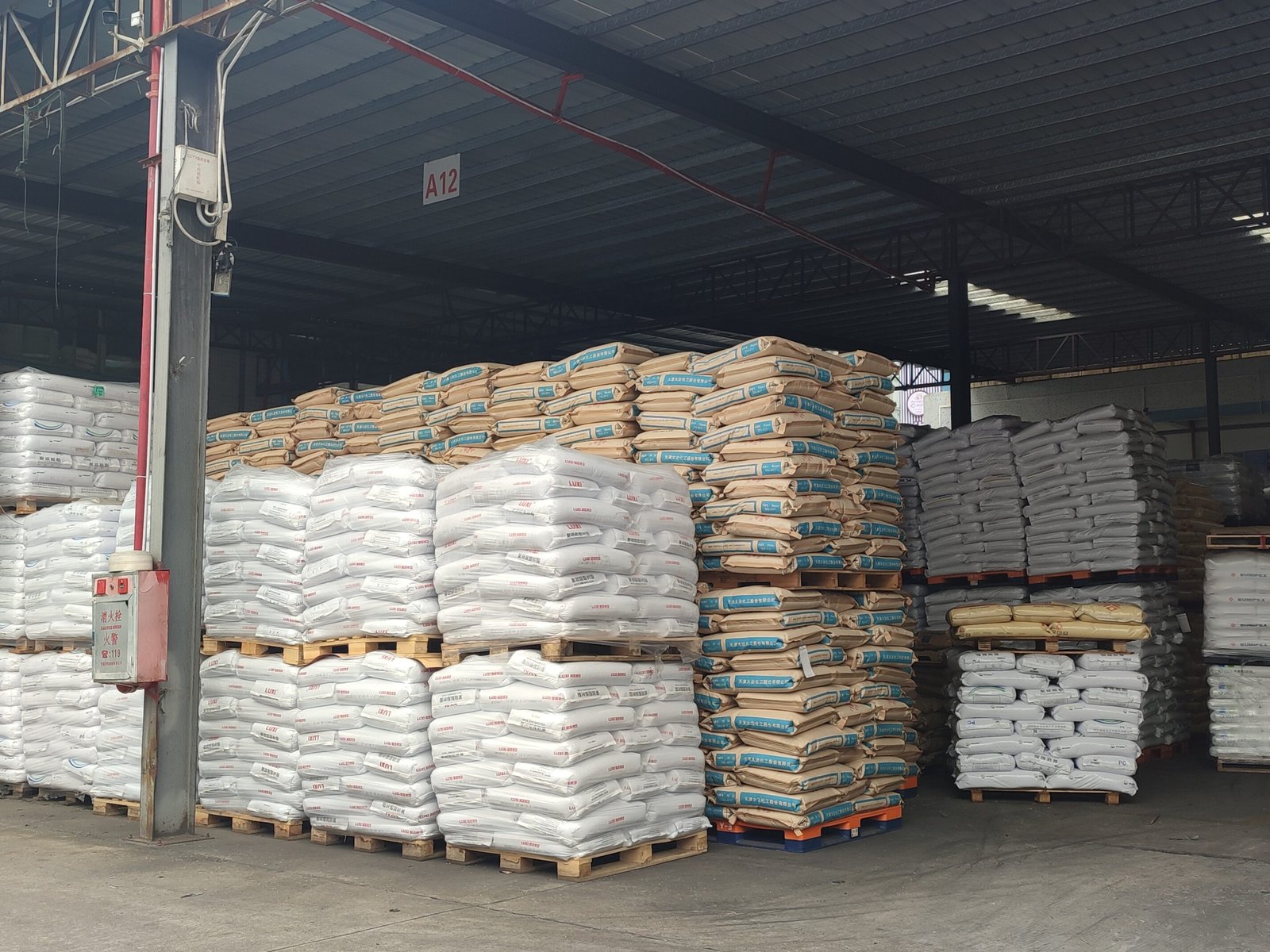PRODUCTOS
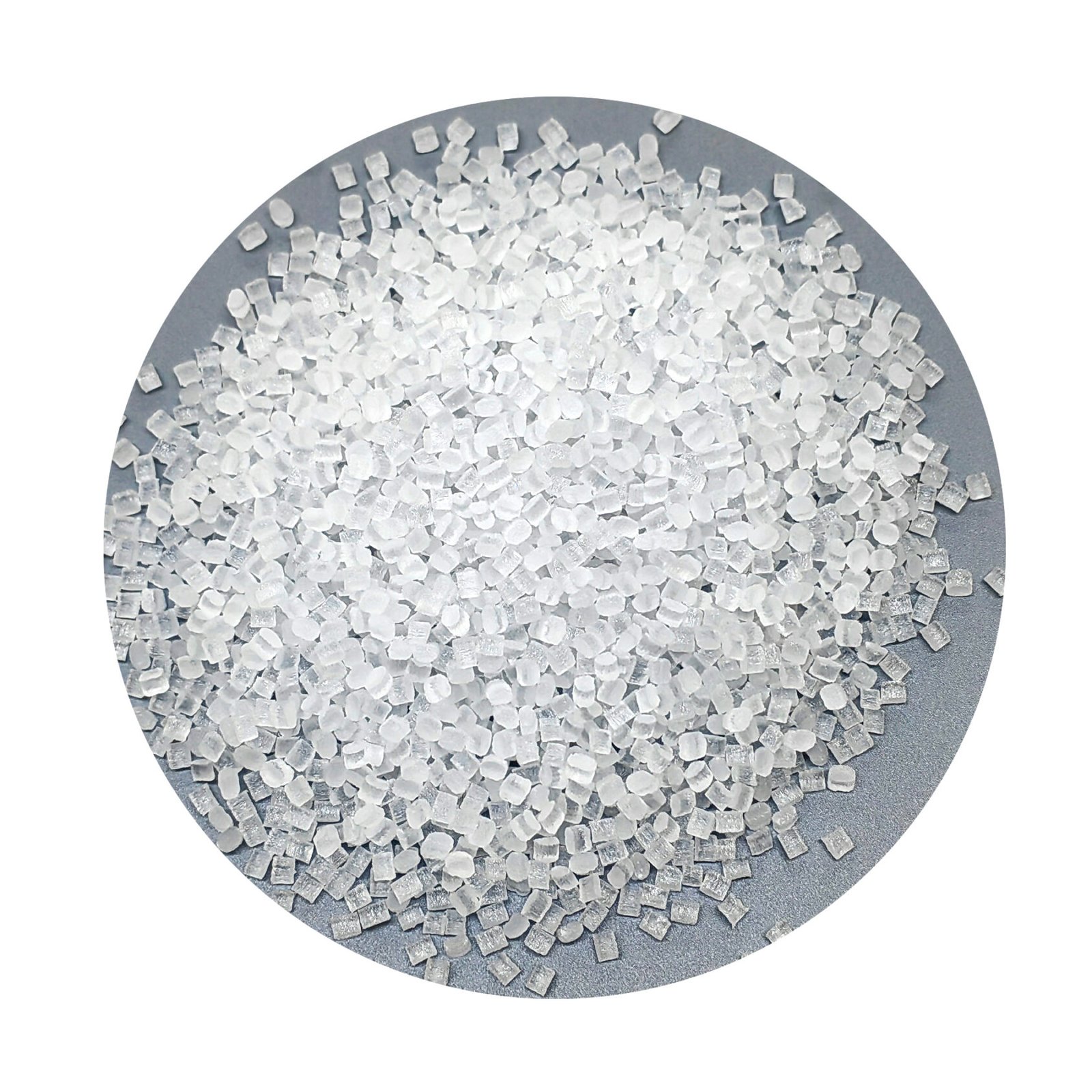

XENOY™ 6370: High-Toughness, Ductile PC+PBT Plastic
Estructura del producto
What is XENOY™ 6370
When sourcing engineering plastics, decision-makers rarely look at strength alone. Toughness, dimensional control, and the way a material behaves in processing all weigh into the choice. For many buyers, XENOY™ 6370 (PC+PBT, glass fiber reinforced) has become a practical solution. It combines polycarbonate and polybutylene terephthalate, is reinforced with 30% glass fiber, and is impact-modified—giving it an unusual mix of stiffness and ductility that is hard to achieve with single polymers.
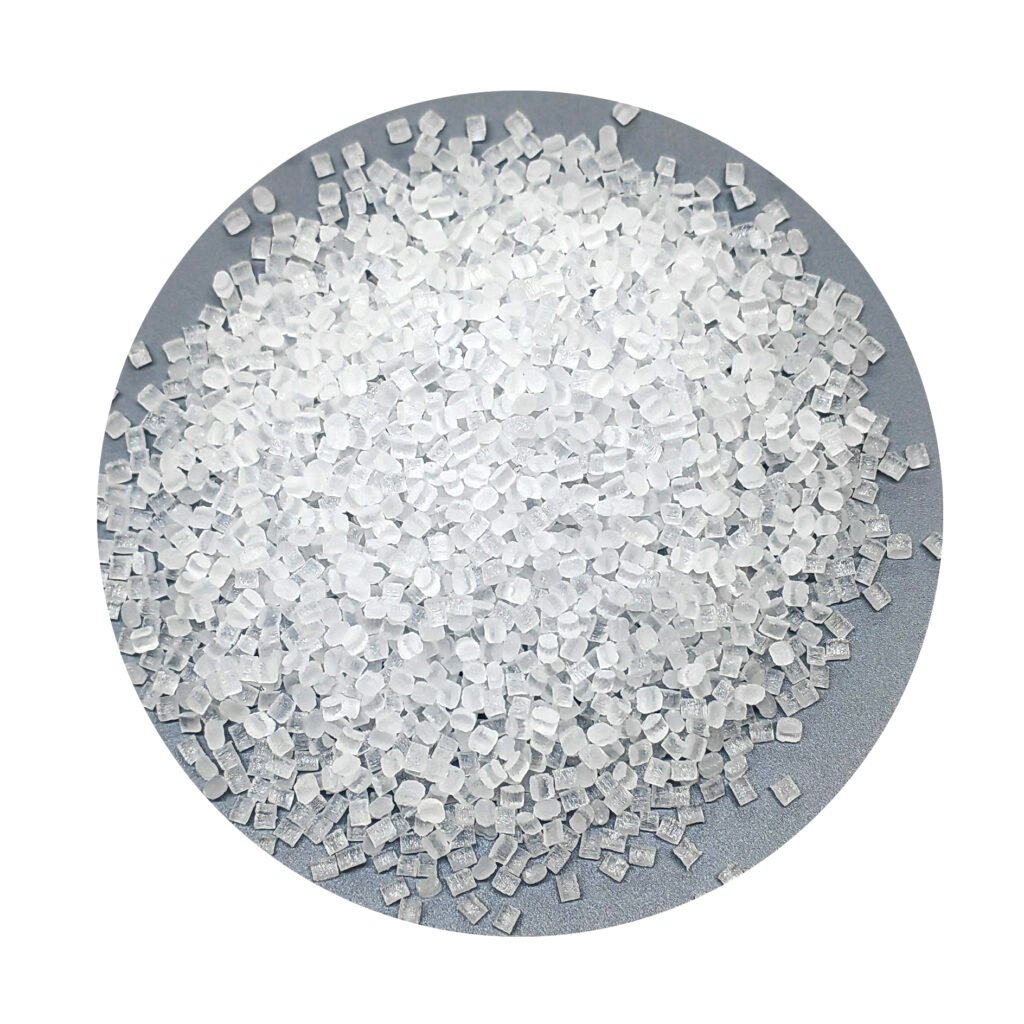
01 | Material Highlights
Structural stability with reinforcement
With 30% glass fiber, the grade holds its shape under load and resists creep, which is particularly useful in parts exposed to constant stress.Ductility and toughness
Unlike some rigid plastics that tend to crack under shock, this material can flex without breaking. Even in low-temperature environments, it resists brittle failure. That makes it workable for snap-fit designs and thin-walled parts where breakage risk is high.Thermal resistance
Mechanical properties remain reliable at elevated temperatures, so it is often chosen for components located near heat sources such as engine compartments or power electronics housings.Electrical insulation
Its dielectric strength and volume resistivity make it dependable for switches, connectors, and other current-carrying parts.Dimensional precision
The relatively low shrinkage rate helps manufacturers hold tighter tolerances in injection molding. Complex molds and assemblies benefit directly from this.
02 | Typical Applications
Automotive – bumper frames, under-hood components, brackets, battery module housings.
Electrical & electronics – switches, connectors, insulation covers.
Industrial equipment – gears, shields, and other parts where both impact and chemical resistance are needed.
Consumer products – sturdy yet lightweight housings that improve user safety and product lifetime.
03 | XENOY™ 6370 Data Sheet
| UL | Condición | Estándar | Valor | Unidad | |||
| CTI | IEC 60112 | 2 | SOCIEDAD ANÓNIMA | ||||
| Hola | Todos los colores 1,5 mm | UL 746A | 3 | SOCIEDAD ANÓNIMA | |||
| Hola | Todos los colores 3,0 mm | UL 746A | 3 | SOCIEDAD ANÓNIMA | |||
| Alta Velocidad | UL 746A | 1 | SOCIEDAD ANÓNIMA | ||||
| HWI | Todos los colores 1,5 mm | UL 746A | 2 | SOCIEDAD ANÓNIMA | |||
| HWI | Todos los colores 3,0 mm | UL 746A | 1 | SOCIEDAD ANÓNIMA | |||
| RTI | Elec Todos los colores 1,5 mm | UL 746B | 140 | °C | |||
| RTI | Elec Todos los colores 3,0 mm | UL 746B | 140 | °C | |||
| RTI | Imp Todos los colores 1,5 mm | UL 746B | 130 | °C | |||
| RTI | Imp todo color 3,0 mm | UL 746B | 130 | °C | |||
| RTI | Str Todos los colores 1,5 mm | UL 746B | 140 | °C | |||
| RTI | Cadena todo color 3,0 mm | UL 746B | 140 | °C | |||
| Resistividad volumétrica | Norma ASTM D257 | 1E15 | Ω.cm | ||||
| Estabilidad dimensional | UL746 | 0.0 | % | ||||
| Rigidez dieléctrica | Norma ASTM D149 | 38 | kilovoltios/mm | ||||
| Resistencia al arco | ASTM D495 | 5 | SOCIEDAD ANÓNIMA | ||||
| Clasificación de llama | Todos los colores 1,5 mm | UL94 | media pensión | ||||
| Clasificación de llama | Todos los colores 3,0 mm | UL94 | media pensión | ||||
| Comportamiento mecánico | Condición | Estándar | Valor | Unidad | |||
| Alargamiento | Yield 5mm/min | Norma ASTM D638 | 3 | % | |||
| Alargamiento | Yield 5mm/min | ISO 527 | 3 | % | |||
| Alargamiento | Rotura de 5 mm/min | Norma ASTM D638 | 4 | % | |||
| Alargamiento | Rotura de 5 mm/min | ISO 527 | 3 | % | |||
| Resistencia a la flexión | Yield 1.3mm/min | Norma ASTM D790 | 150 | MPa | |||
| Resistencia a la flexión | Yield 2.0mm/min | ISO 178 | 154 | MPa | |||
| Resistencia a la flexión | Rotura de 1,3 mm/min | Norma ASTM D790 | 138 | MPa | |||
| Módulo de flexión | 1,3 mm/min | Norma ASTM D790 | 5370 | MPa | |||
| Módulo de flexión | 2,0 mm/min | ISO 178 | 7750 | MPa | |||
| Impacto sin muescas Izod | 23ºC | ASTM D4812 | 65.30 | kJ/m² | |||
| Impacto de muesca Izod | 23ºC | Norma ASTM D256 | 17.34 | kJ/m² | |||
| Impacto de muesca Izod | 23 °C 4,0 mm | ISO 180 | 10 | kJ/m² | |||
| Impacto de muesca Izod | -30°C | Norma ASTM D256 | 11.42 | kJ/m² | |||
| Impacto de muesca Izod | -30°C 4.0mm | ISO 180 | 6 | kJ/m² | |||
| Resistencia a la tracción | Rotura de 5 mm/min | Norma ASTM D638 | 91 | MPa | |||
| Resistencia a la tracción | Rotura de 5 mm/min | ISO 527 | 105 | MPa | |||
| Resistencia a la tracción | Yield 5mm/min | Norma ASTM D638 | 97 | MPa | |||
| Resistencia a la tracción | Yield 5mm/min | ISO 527 | 105 | MPa | |||
| Módulo de tracción | 1,0 mm/min | ISO 527 | 8500 | MPa | |||
| Módulo de tracción | 5mm/min | Norma ASTM D638 | 9750 | MPa | |||
| Impacto con entalla Charpy | 23 °C 4,0 mm | ISO 179 | 9 | kJ/m² | |||
| Térmico | Condición | Estándar | Valor | Unidad | |||
| HDT | 1,8 MPa 4,0 mm | ISO 75 | 155 | °C | |||
| HDT | Sin recocer 0,45 MPa 6,4 mm | Norma ASTM D648 | 204 | °C | |||
| HDT | Sin recocer 1,8 MPa 6,4 mm | Norma ASTM D648 | 149 | °C | |||
| CLE | Flujo -40,0~40 °C | Norma ASTM E831 | 2.7E-5 | cm/cm/°C | |||
| CLE | Flujo -40,0~40 °C | ISO 11359 | 2.7E-5 | cm/cm/°C | |||
| CLE | Flujo 60~138°C | Norma ASTM E831 | 1.98E-5 | cm/cm/°C | |||
| CLE | xFlow -40.0~40°C | Norma ASTM E831 | 1.1E-4 | cm/cm/°C | |||
| CLE | xFlow -40.0~40°C | ISO 11359 | 1.1E-4 | cm/cm/°C | |||
| Temperatura de ablandamiento Vicat | 50 °C/h 50 N | Norma ASTM D1525 | 153 | °C | |||
| Temperatura de ablandamiento Vicat | 50 °C/h 50 N | ISO 306 | 148 | °C | |||
| Temperatura de ablandamiento Vicat | 120 °C/h 50 N | ISO 306 | 150 | °C | |||
| Propiedad fisica | Condición | Estándar | Valor | Unidad | |||
| Absorción de agua | 24 horas | Norma ASTM D570 | 0.09 | % | |||
| Absorción de agua | Saturación de 23 °C | ISO 62 | 0.5 | % | |||
| Absorción de agua | 23 °C 50HR | ISO 62 | 0.15 | % | |||
| Contracción | Flow 0.75-2.30mm | MÉTODO INTERNO | 0.3~0.4 | % | |||
| Contracción | Flow 2.3-4.6mm | MÉTODO INTERNO | 0.4~0.5 | % | |||
| Contracción | xFlow 0.75-2.30mm | MÉTODO INTERNO | 0.4~0.7 | % | |||
| Contracción | xFlow 2.3-4.6mm | MÉTODO INTERNO | 0.7~0.9 | % | |||
| Volumen específico | Norma ASTM D792 | 0.7 | cm³/g | ||||
| Densidad | Norma ASTM D792 | 1.44 | gramos/cm³ | ||||
| Densidad | ISO 1183 | 1.44 | gramos/cm³ | ||||
| Índice de fusión | 250°C 5 kg | Norma ASTM D1238 | 24 | g/10min | |||
| Índice de fusión | 250°C 5 kg | ISO 1133 | 12 | cm³/10min | |||
| Índice de fusión | 265°C 5kg | ISO 1133 | 19 | cm³/10min | |||
| Propiedades electricas | Condición | Estándar | Valor | Unidad | |||
| Constante dieléctrica | 1 MHz | Norma ASTM D150 | 4 | ||||
| Constante dieléctrica | 100 Hz | Norma ASTM D150 | 4 | ||||
| Resistividad volumétrica | Norma ASTM D257 | 4.8E+15 | Ω.cm | ||||
| Factor de disipación | 1 MHz | Norma ASTM D150 | 0.02 | ||||
| Factor de disipación | 100 Hz | Norma ASTM D150 | 0.003 | ||||
| Dureza | Condición | Estándar | Valor | Unidad | |||
| Dureza Rockwell | R(Escala) | Norma ASTM D785 | 109 | ||||
| Inflamabilidad | Condición | Estándar | Valor | Unidad | |||
| Clasificación de llama | Todos los colores 1,5 mm | UL94 | media pensión | ||||
| Clasificación de llama | Todos los colores 3,0 mm | UL94 | media pensión | ||||
Looking for the full datasheet? Contact us for more technical information.
04 | Processing and Compatibility
The grade is designed for injection molding and shows a reasonable compromise between flow and strength. For high-volume production, this means fewer trade-offs between cycle time and part quality. Shrinkage is low, so parts stay closer to design dimensions. In mass production runs, the stability of this material reduces reject rates, which matters directly to cost control.
05 | Why it Stands Out
Compared with using PC or PBT on their own, XENOY™ 6370 brings together the ductility of PC, the chemical resistance of PBT, and the rigidity of glass fiber reinforcement.
Engineers also point out its adaptability: it performs in hot, cold, and humid conditions.
In many applications it can even replace metal or more expensive engineering plastics, bringing both weight reduction and cost savings.
This is one reason it is frequently specified in automotive lightweighting projects and in electrification components.
06 | FAQ
Q1: Can it be used outdoors?
It tolerates some outdoor conditions. However, for continuous exposure, UV-stabilized versions or protective coatings are recommended.
Q2: What advantage does it have over metal parts?
It is lighter, easier to process, and usually more economical—while still meeting structural requirements in many cases.
Q3: Is it suitable for electric vehicle parts?
Yes. Its insulation and heat stability make it a natural fit for battery brackets, connectors, and related modules.
07 | Why Work with Juyuan
For buyers, material quality is only half the story—supply security matters just as much. Juyuan has been active in the international plastics trade for 24 years and offers:
Verified sourcing – authentic materials from stable global channels.
Practical selection advice – recommendations shaped around customer industries, not just data sheets.
Efficient delivery – logistics networks covering multiple ports and warehouses to keep lead times short.
Long-term reliability – ongoing supply partnerships with customers in automotive, electronics, and industrial sectors.
Choosing Juyuan means working with a supplier that understands both the material and the buyer’s business context.
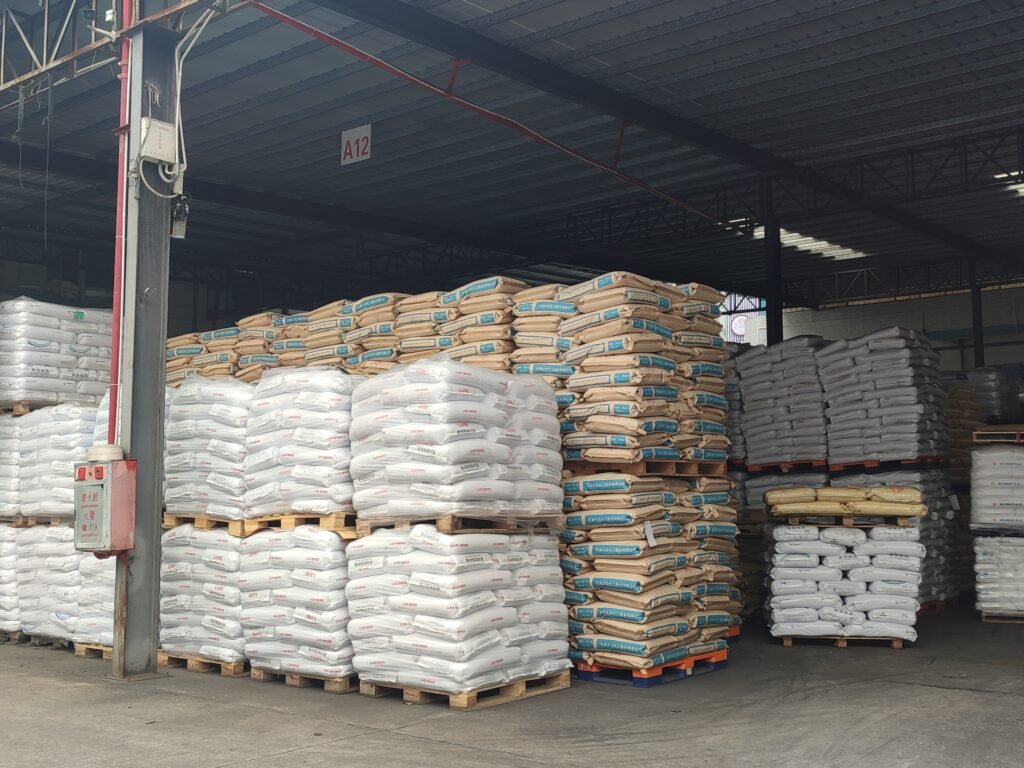
【Recomendaciones relacionadas】
VALOX™ 553 PC+PBT Material: Chemical Resistance for Electric Motors, Pump Housings Más información>
What is PBT Material? — Procurement Guide and Market Insights Más información>
VALOX™ V3900WX: UV-Resistant PC+PBT for Automotive and Industrial Applications Más información>
